Qayat
Alutiiq Boats
Before motorized boats, Alutiiq people traveled Kodiak’s waters in qayat–kayaks and angyat—large open boats expertly assembled from wood and animal skins. Carefully crafted and well-maintained boats were a lifeline. They allowed people to harvest fish and sea mammals, travel and trade over great distances, and carry family members and supplies beneath the deck. In coastal Alaska, every man learned kayak construction. Every woman learned to make kayak covers.
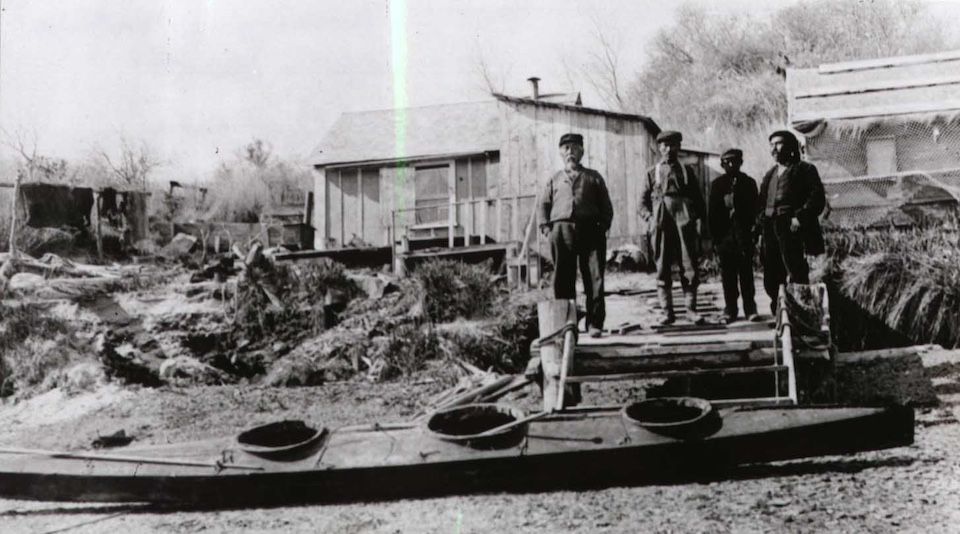
Alutiiq men with a three-hatched kayak, Uganik Village, ca. 1914. Photo by Dennis Winn, McCubrey Collection, Alutiiq Museum Library.
Maritime Skill
Seafarers in the Gulf of Alaska regularly encounter dangerous winds, heavy rains, dense fog, freezing spray, and towering waves. Sturdy boats, waterproof clothing, and knowledge of the weather are essential for all ocean travelers as the threats of hypothermia and drowning are always present. Alutiiq people came to Kodiak by water and perfected their maritime technologies over 7,000 years of coastal living. The qayaq—kayak was one of their most important tools.
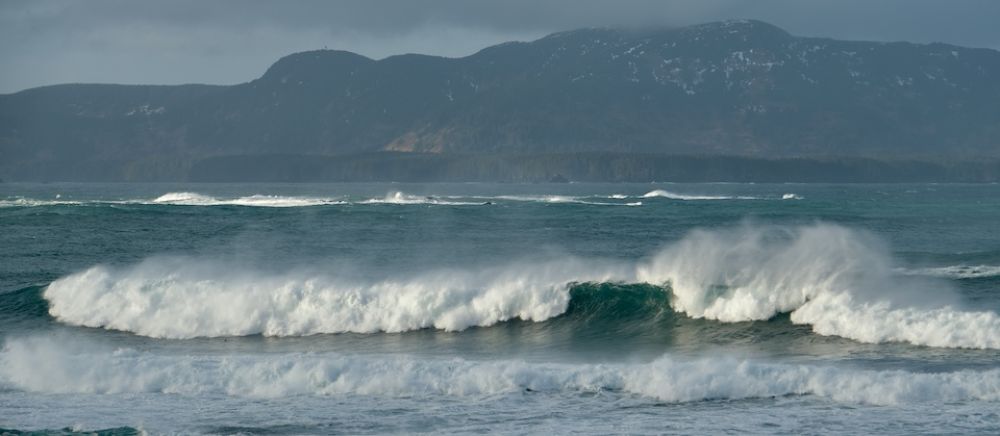
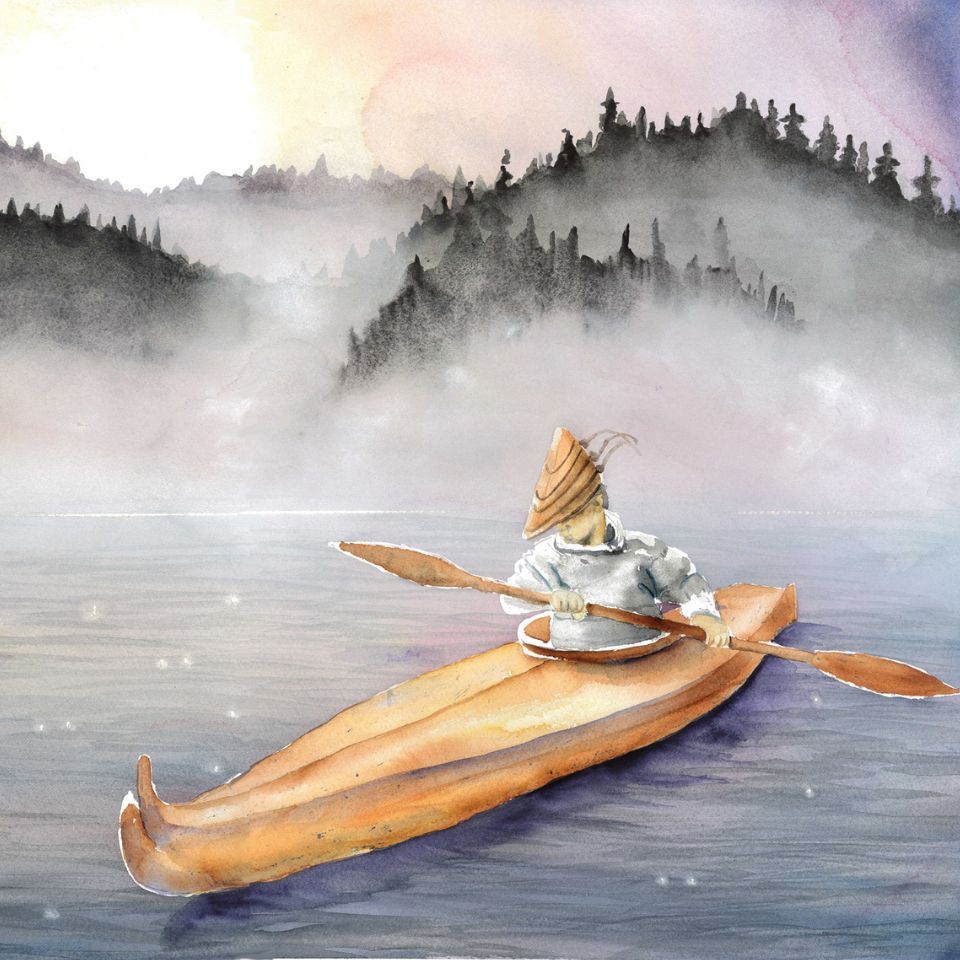
Skin Boats
From the Arctic Ocean to Prince William Sound, Native people crafted swift, seaworthy boats from wood and animal skins. Each culture had a distinct style of kayak, with unique qualities specially designed for the environment.

Designed for Waves
The Alutiiq/Sugpiaq paddled long and slender kayaks built for the region’s rough, windy waters. A split and upturned prow helped these boats cut through the waves. A flexible wooden frame, upturned bow, and oiled skin cover helped kayaks cut through Kodiak’s rough waters.
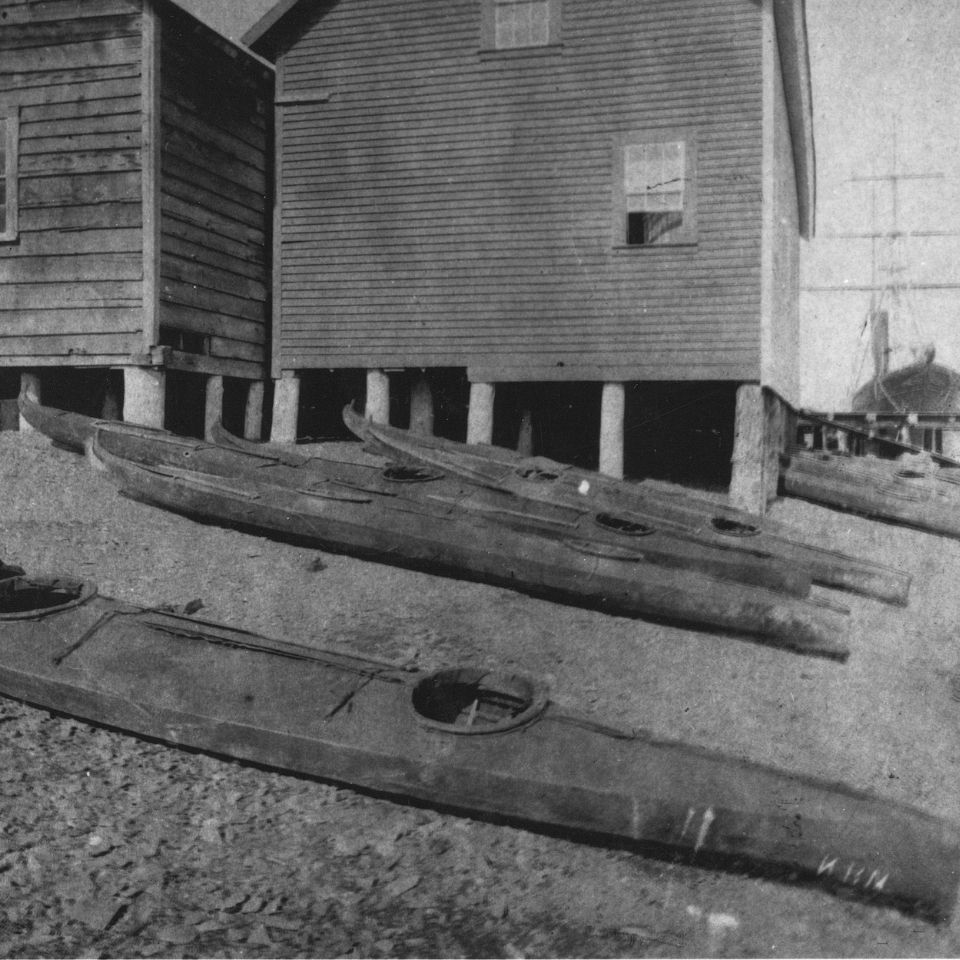
Building
Men carved kayak parts from driftwood. They used their arms, hands, and fingers to determine the size of each piece and its placement in the frame. Then, they tied the pieces together with sinew and baleen. Women sewed boat covers from de-haired sea mammal skins, using waterproof stitches. A coat of oil helped the cover slide over the frame and glide through the water.
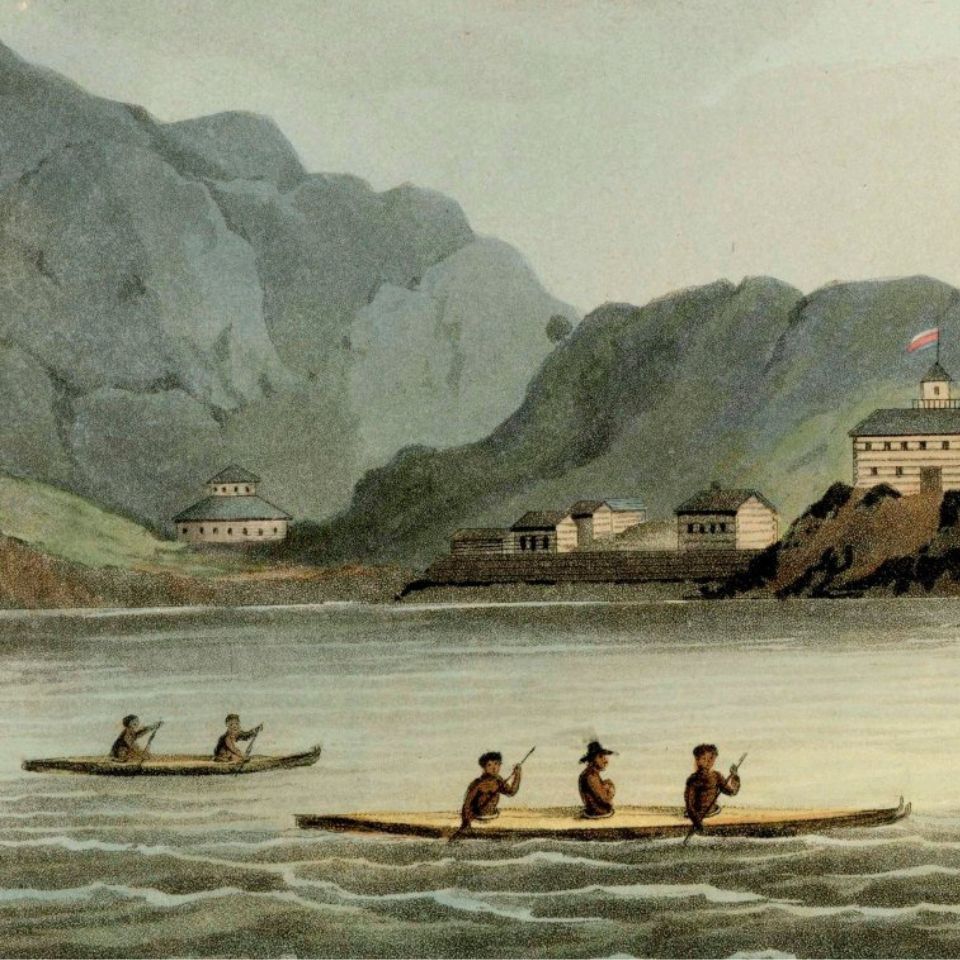
Hatches
Qayanguaq—Single-hatched Kayak: For fishing, traveling, and hunting fast animals.
Qayarpak—Double-hatched Kayak: For team hunting. The front paddlers hurled weapons. The man in the rear steadied the kayak.
Paitaalek—Triple-hatched Kayak: Made in the colonial era to carry a Russian trader in the center.
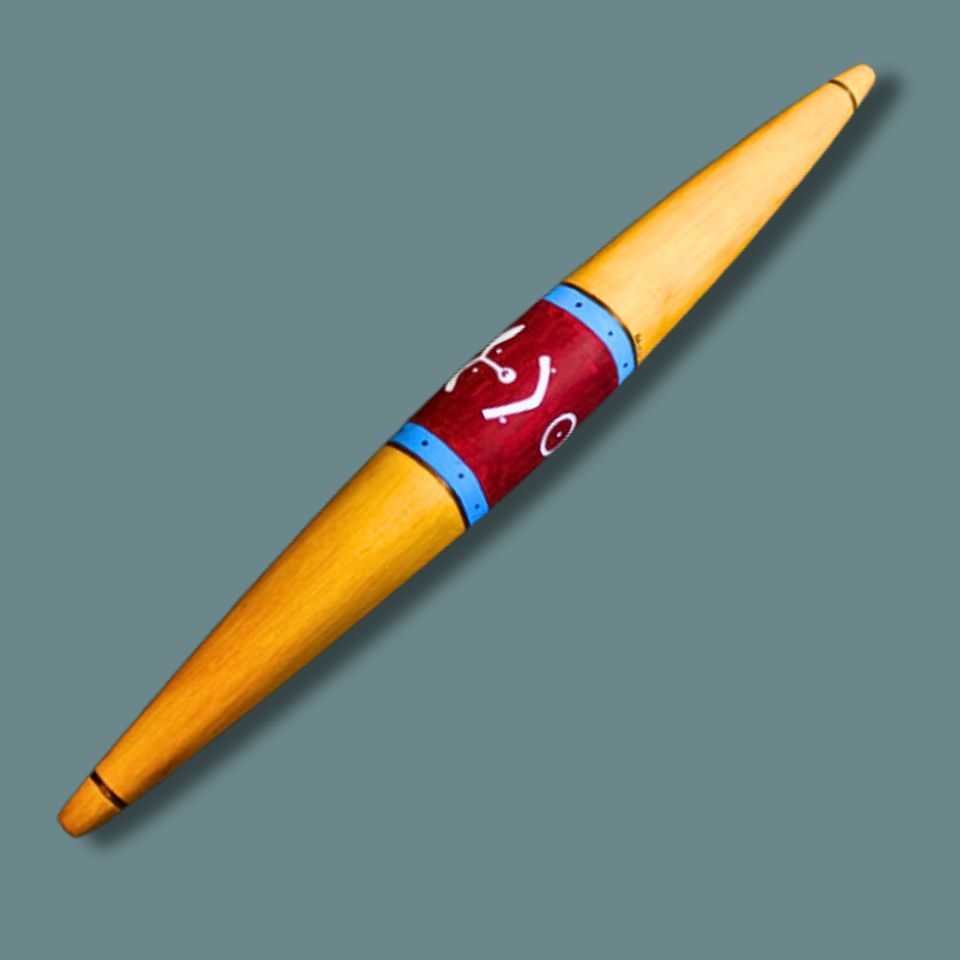
Casuutet—Equipment
To the deck of their boats, paddlers lashed harpoons, killing lances, quivers filled with arrows, fishing rigs, a stunning club, and an extra paddle. Inside, they carried survival gear—a bailer, fresh water and food, sewing tools for repairs, spare harpoon parts, and amulets for hunting luck.
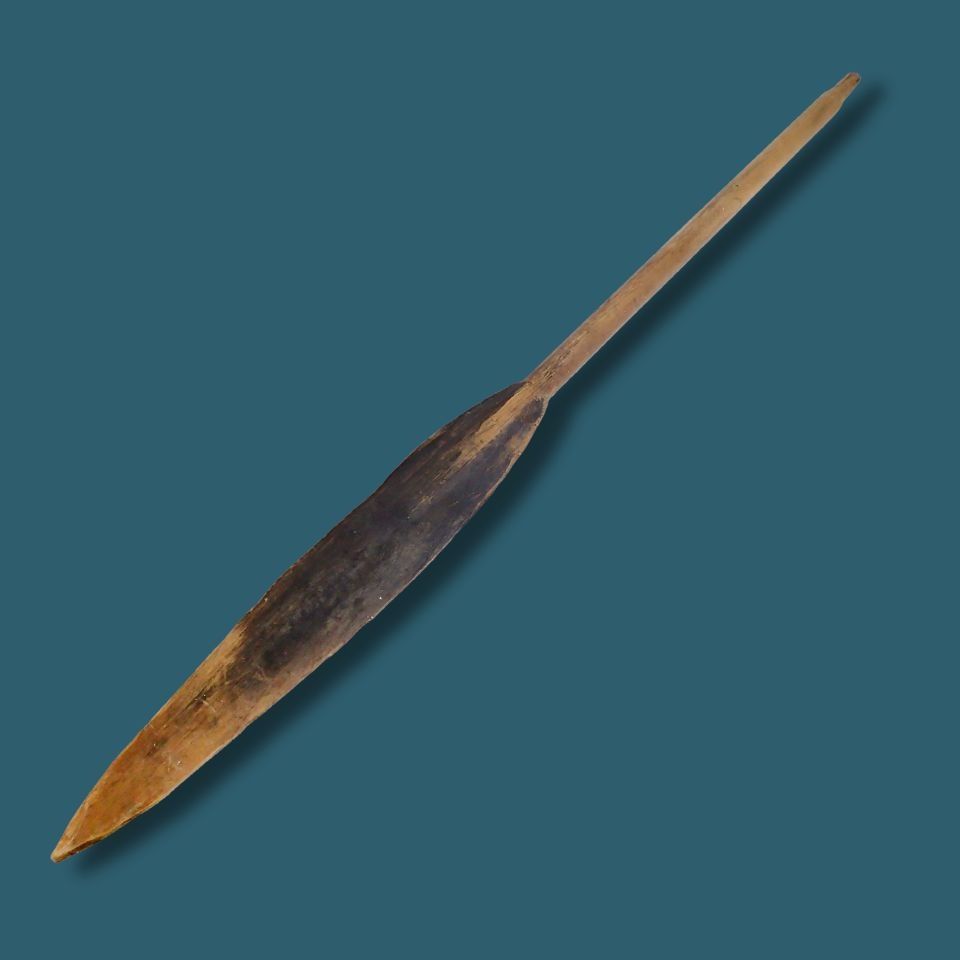
Anguat Paddles
Alaska Native cultures used different styles of paddles, matching their equipment to water conditions. Alutiiq paddlers preferred a narrow, single-bladed paddle that allowed deep, stabilizing strokes in rough water. Like kayaks, paddles were carved to fit their users. Boaters used their paddles to find sea mammals, placing their teeth against the handle to feel vibrations in the water.
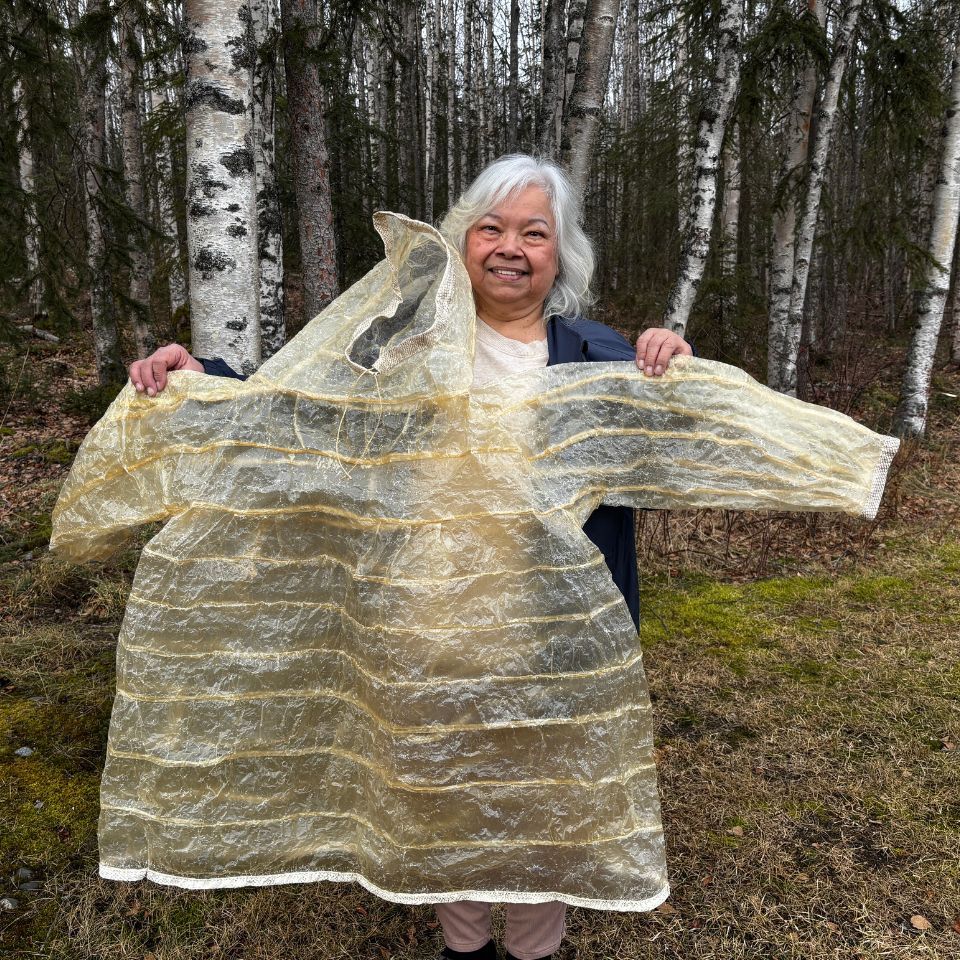
Kanaglluk—Gutskin Jacket
Waterproof clothing was an essential piece of gear. Jackets were made from water-resistant animal intestines with special waterproof stitches. The bottom of each jacket had a wide opening with a drawstring. The paddler climbed in his boat and tied the bottom of his jacket around the opening. This kept water out and warm air in.
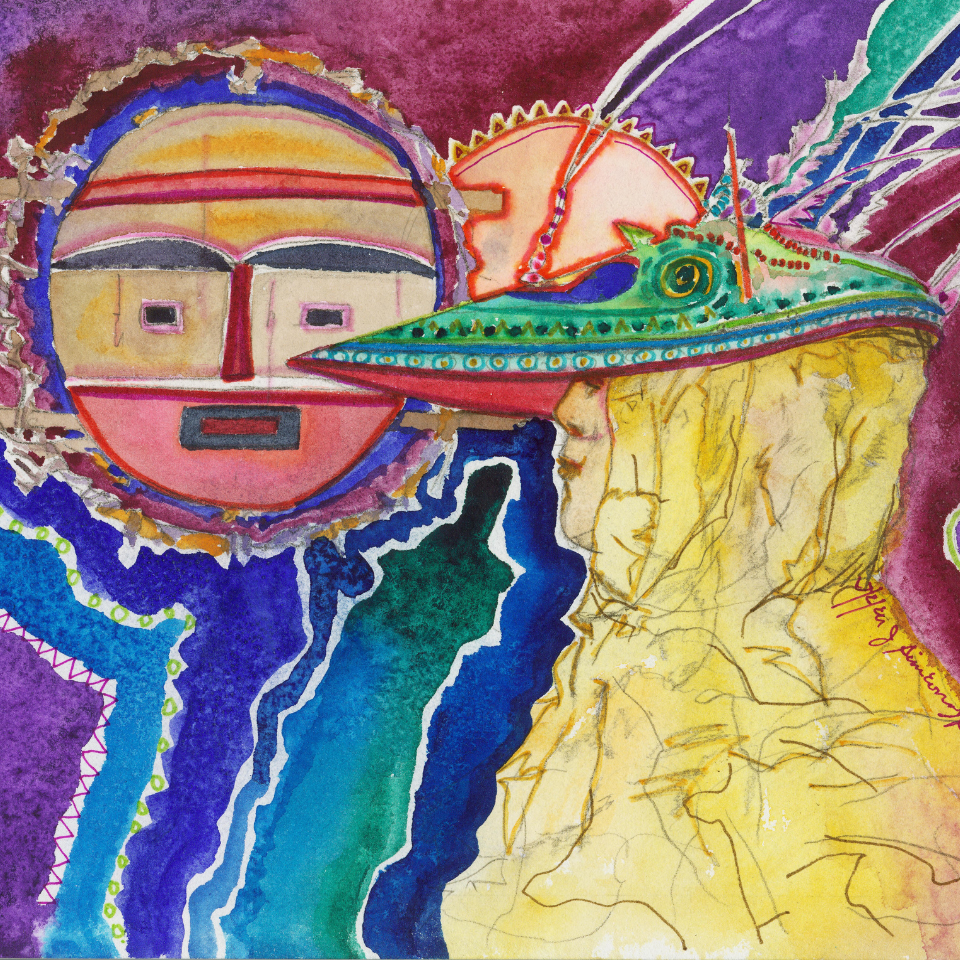
Caguyat—Bentwood Hats
Wooden hats shielded paddlers’ faces from the sun and sea spray. Each hat was carved from a single piece of wood and bent to shape with steam. Some hats resembled a visor. Others were tall, conical pieces with a long brim. Every hunting hat was a work of art decorated with paint, carvings, beads, and whiskers to reflect its owner’s skills and achievements.
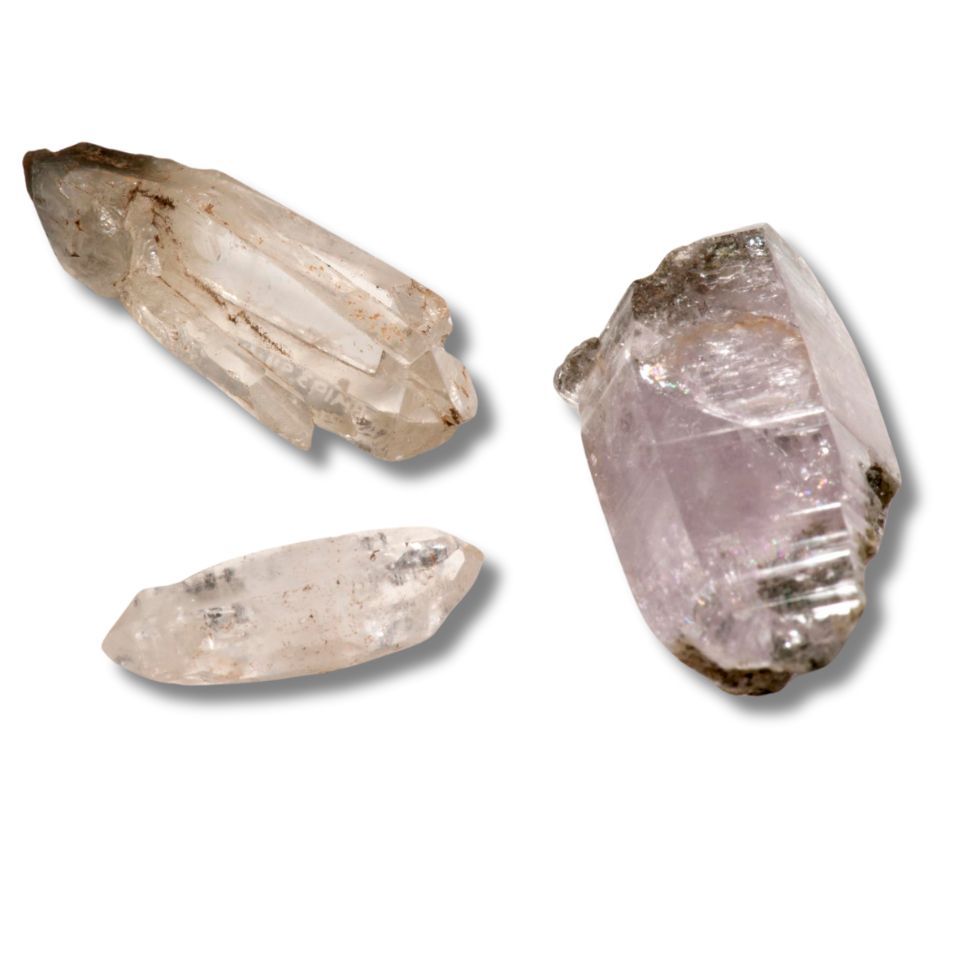
Nakernat—Talismans
Hunters carried amulets—small, rare objects that drew animals near and provided assistance. These included red, black, and green stones, quartz crystals, pieces of mica, bear hair, eagle feathers, hummingbirds, and even rare plants. Caring for one’s talisman was important. Amulets were alive. Hunters fed them and kept them in small boxes they could carry in their kayaks. If a hunter lost an amulet, he would lose his luck.
Kayak Exhibit Tour
Explore the museum’s kayak display with Curator Patrick Saltonstall.
Learn More
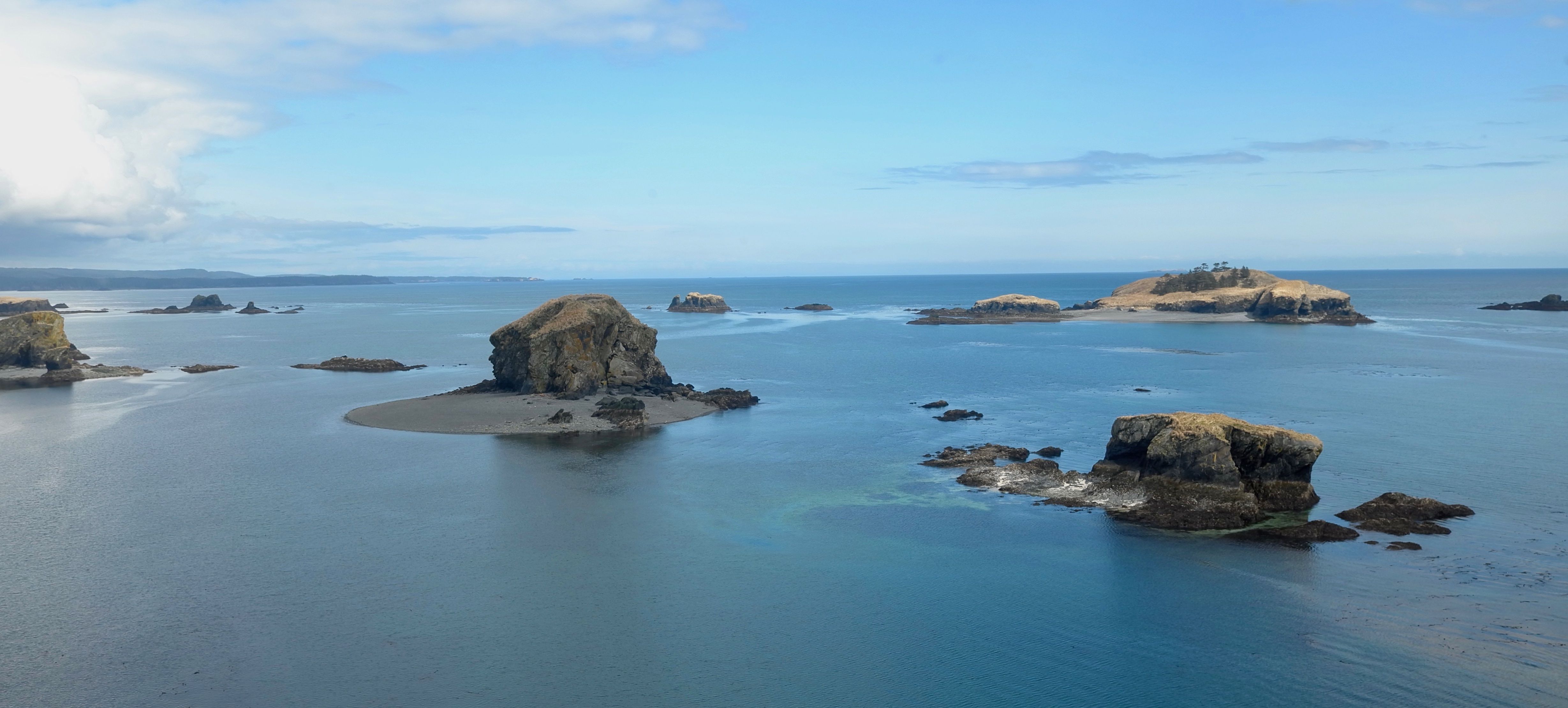
Traveling by Kayak—A Memory
“In the summertime, mama tells me, and this is probably where I got claustrophobia, they would load us in the bidarkis and . . . She said they would have a chicken maybe, a couple of chickens maybe, a dog, a cat, and two babies and the mother, and, papa would take us over to Eagle Harbor where we would camp for the summer. And we lived in tents. We would dry fish, and then in the fall they would bring us back home.”

-
Learning about Kayak Building — Alfred Naumoff
-
Building an Open Boat — Presentation by CJ Christiansen
-
Modeling Sugpiat Watercraft — Presentation by Sven Haakanson Jr.
-
Uncovering Kayaking Traditions — Presentation by Susan Malutin
-
Hunting at Sea: The Pursuit of Marine Mammals Before Gas and Ammo — Presentation by Patrick Saltonstall
The Fast Kayak, 1868

The Fast kayak is 14.5 feet long. It has a lashed wooden frame covered in oiled seal skin and decorated with human hair and beads. Photo courtesy of Harvard University’s Peabody Museum.
Collected by U.S. Army Officer Lt. William Fast in 1868, this one-man qayaq was stored in Harvard University’s Peabody Museum of Archaeology and Ethnology. Alutiiq culture-bearers identified the qayaq and consulted on its care. Although its exact origin is unknown, the boat’s construction is uniquely Alutiiq. It features an upturned bow, a hallmark of qayat built to slice through the rough, windy waters of the Alutiiq world. In 2023, Harvard transferred the boat to the Alutiiq Museum.
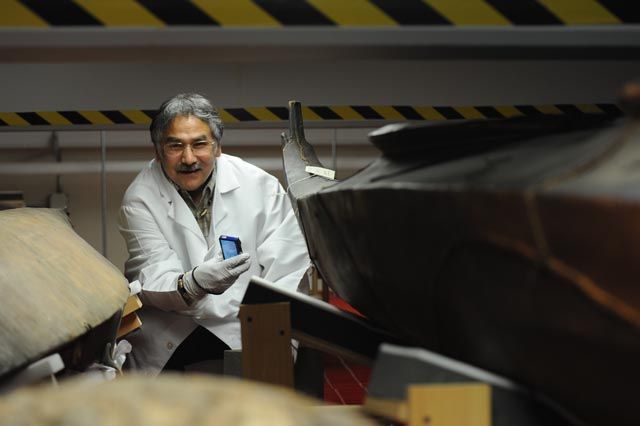
Alfred Naumoff studies the Fast kayak in storage at the Peabody Museum, Harvard University. Photo by Sven Haakanson Jr.
Kayak Care
Kodiak Alutiiq culture bearers worked with Peabody Museum staff members to preserve the Fast qayaq before it traveled to Kodiak for study and display. In 2022, Harvard permanently transferred the qayaq to the care of the Alutiiq Museum.
Supported by the Alaska Office of History and Archaeology and the National Park Service through a Maritime Heritage Grant.
